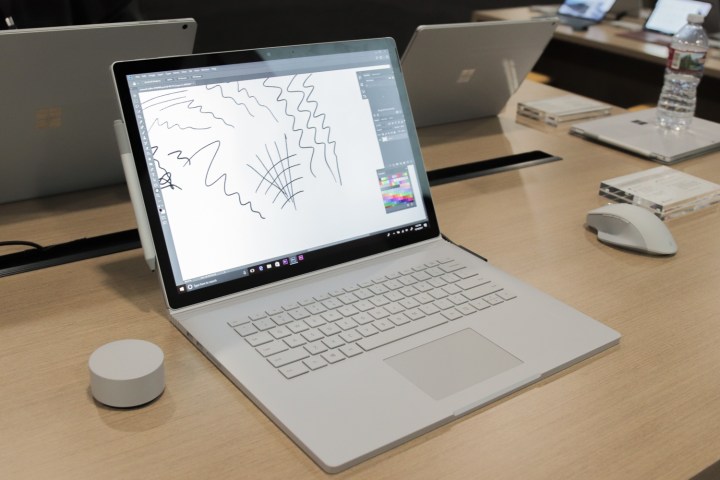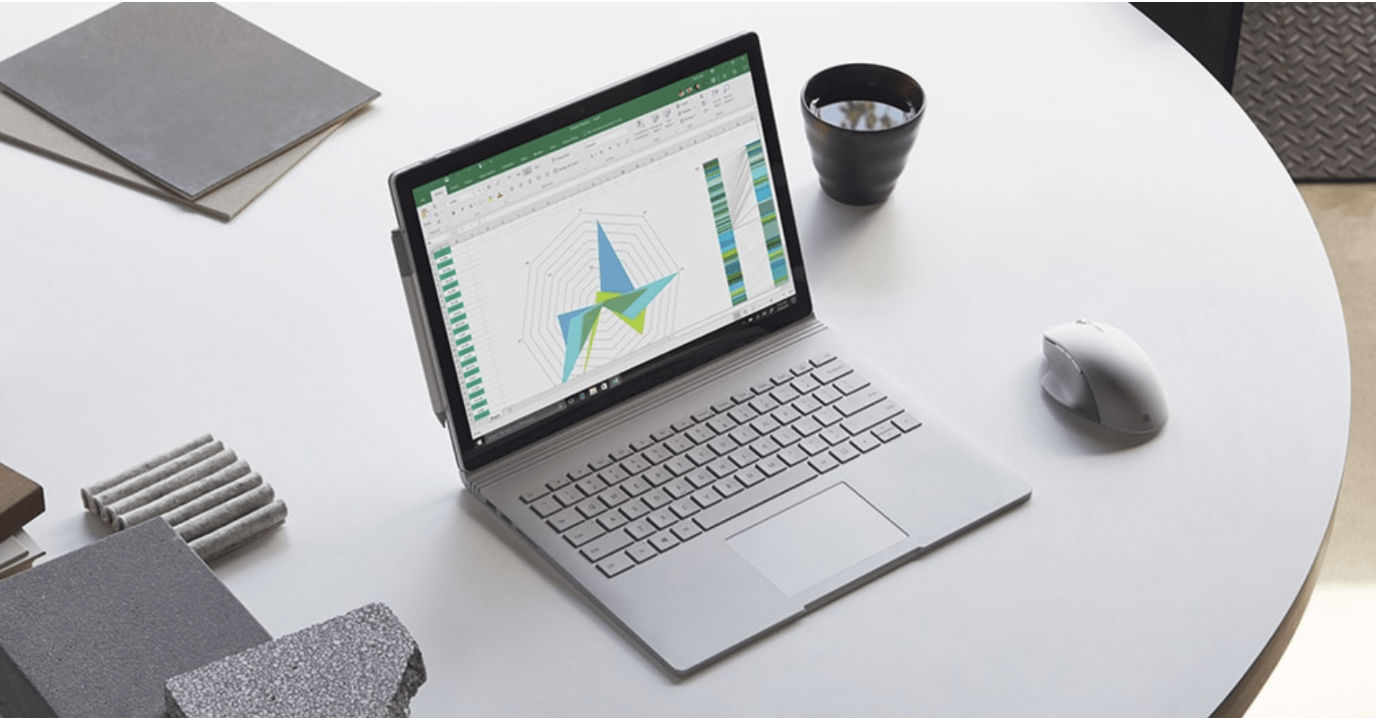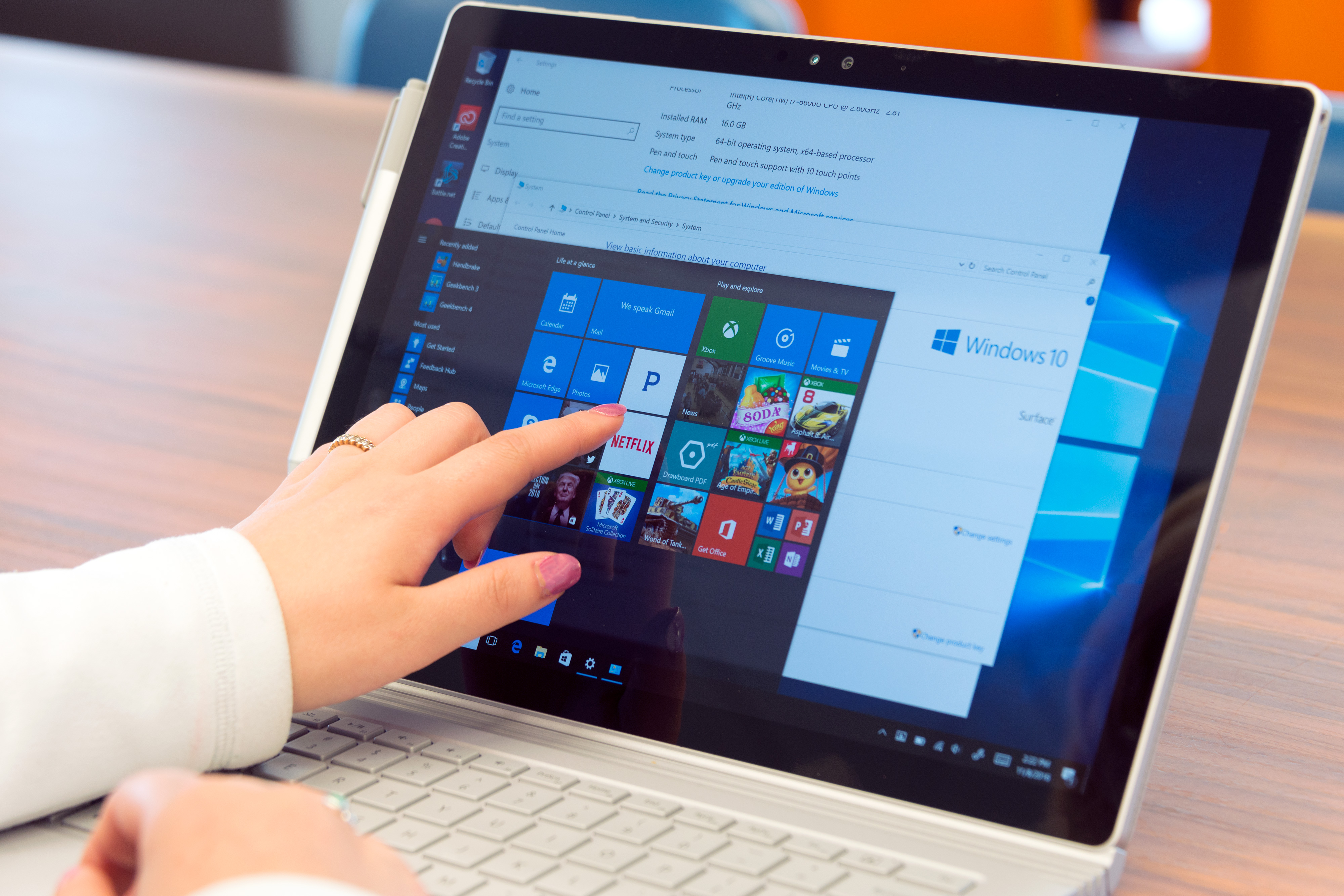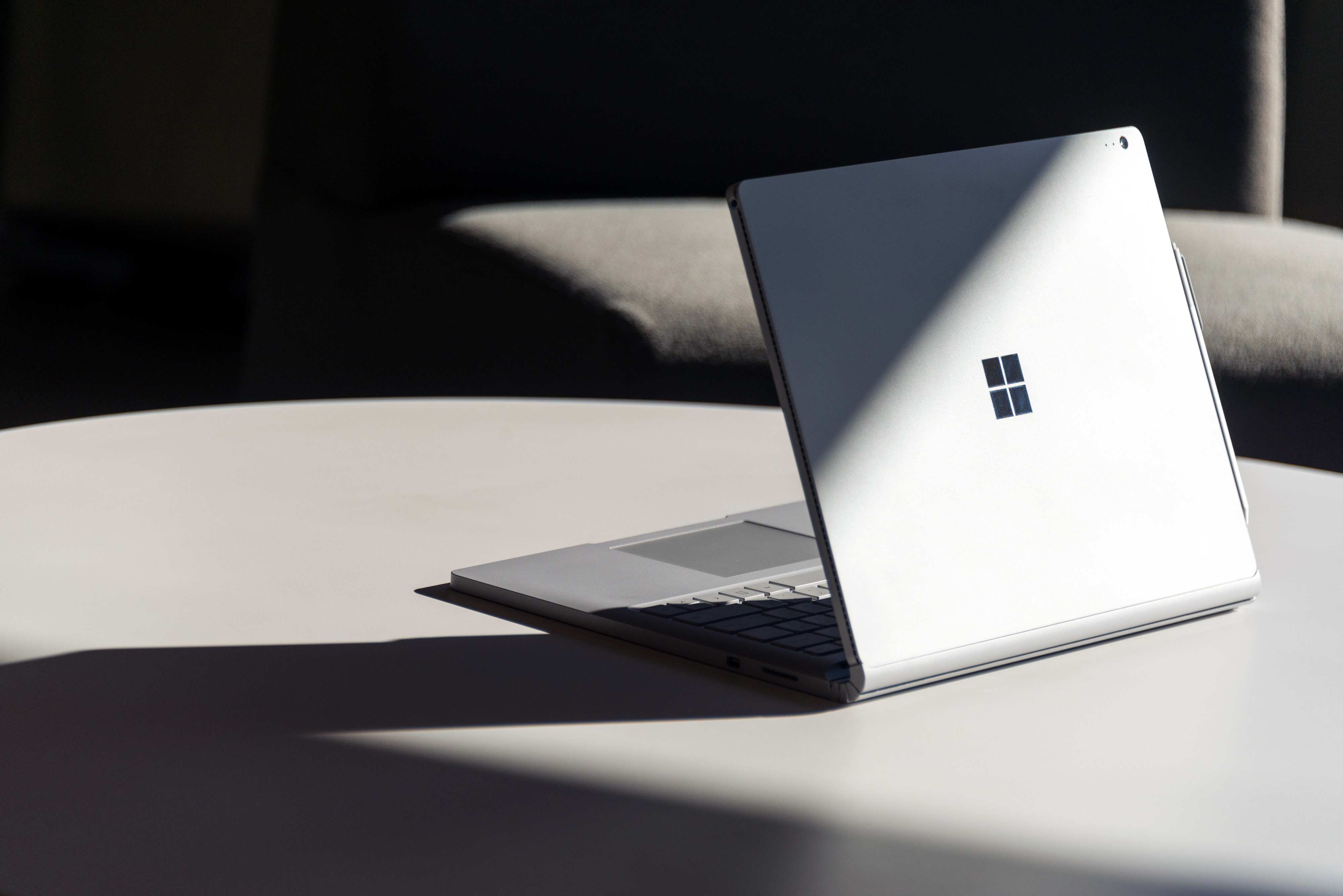
Just how significant is the Surface Book 2? In this comparison, we compare the Surface Book 2 vs. Surface Book to see if the new machine was worth the wait.
|
Surface Book with |
Surface Book 2 |
|
| Dimensions | 12.30 x 9.14 x 0.51-0.90 (in) 11.60 x 8.54 x 0.53 (in) with keyboard |
13.5-inch i5: 12.3 x 9.14 x 0.51-0.90 (in) 13.5-inch i7: 12.3 x 9.14 x 0.59-0.90 (in) 15-inch: 13.5 x 9.87 x 0.568-0.90 (in) |
| Weight | Starting at 3.63 pounds | 13.5-inch starts at 3.38 pounds 15-inch starts at 4.2 pounds |
| Keyboard | Full-size backlit keyboard | Full-size backlit keyboard |
| Processor | Up to sixth-generation Intel Core i7 | Up to eighth-generation Intel Core i7 |
| RAM | 8GB or 16GB RAM | 8GB or 16GB |
| Graphics | Intel HD 520 Nvidia GeForce GTX 965M 2GB |
Intel UHD 620 Nvidia GeForce GTX 1050 (13.5-inch) Nvidia GeForce GTX 1060 (15-inch) |
| Display | 13.5-inch PixelSense Display | 13.5-inch PixelSense Display 15.0-inch PixelSense Display |
| Resolution | 3,000 x 2,000 (267 ppi) | 13.5-inch: 3,000 x 2,000 (267 ppi) 15-inch: 3,240 x 2,160 (260 ppi) |
| Storage | Up to 1TB PCIe SSD | Up to 1TB PCIe SSE |
| Networking | 802.11ac, Bluetooth 4.1 | 802.11ac, Bluetooth 4.1 |
| Connectivity | USB-A 3.0 (x2), mini-DisplayPort, Surface Connect, SD card reader, 3.5mm combo jack | USB-A 3.0 (x2), USB-C 3.1, Surface Connect, SD card reader, 3.5mm combo jack 15-inch only: Xbox Wireless built-in |
| Webcam | 1080p webcam | 1080p webcam |
| Operating System | Windows 10 | Windows 10 |
| Battery | 60 watt-hour | 13.5-inch: 70 watt-hour 15-inch: 90 watt-hour |
| Price | $2,400+ | 13.5-inch i5: $1,500 13.5-inch i7: $2,000+ 15-inch: $2,500+ |
| Availability | No longer available | Now (Microsoft Store) |
| Review | 3.5 out of 5 stars | Hands-on |
Design
The Surface Book 2 doesn’t look much different from the Performance Base version. It’s the same silver-grey magnesium chassis with the unique fulcrum hinge and the gap between the display and the keyboard. Look a little closer, and you’ll see that the keyboard is now flush with the deck while the older version’s keyboard was slightly inset. But otherwise, the iconic Surface Book design remains largely intact, at least aesthetically.
In terms of engineering, Microsoft only made a few changes to the new version. The biggest change came in the hinge design, making it stiffer to better support the 15-inch display when the Surface Book is used in a lap. While that might seem like a small change, this was a major pain point for owners of the older versions. By all accounts so far, Microsoft succeeded in fixing things.

In addition, Microsoft engineered the 13.5-inch version’s tablet portion to be completely fanless regardless of which CPU is installed, and that’s a real boon. The 15-inch version doesn’t enjoy the same benefit, but the cooling system has generally been improved, so fan noise should hopefully be held to a minimum.
The Surface Book 2 fixes one of the machine’s few design flaws and offers quieter performance in the smaller version, and so it deserves the win in this category.
Winner: Surface Book 2
Performance
The Surface Book with Performance Base came equipped with sixth-generation Intel Core processors and an Nvidia 965M GPU. That made it at least a generation behind in CPU power and not so significantly improved in terms of GPU power over the original Surface Book. It was a good performer, but it definitely punched below its weight class given its very high price.
The Surface Book 2 changes all that. Both the 13.5-inch and 15-inch models now offer eighth-generation Intel Core i7-8650U processors, with a seventh-generation Core i5-7300 option in the 13.5-inch lowest-end configuration. That means that unless you choose the entry-level option, you’re guaranteed to get the fastest 15-watt processor available today. By our testing with some other eighth-generation machines, you’re guaranteed to get most of the performance advantages of quad-core processors with significantly more efficiency than the seventh-generation CPUs could offer.

In addition, the 13.5-inch model (other than the low-end configuration) offers the fast Nvidia GeForce GTX 1050 GPU, meaning that it should serve as a decent entry-level gaming system and will provide good performance in advanced productivity tasks like video editing. The 15-inch model ups the ante even more, packing in the GTX 1060 and promising real performance for all but the most hardcore mobile gamers and even better performance for high-end applications like AutoCAD.
Clearly, the Surface Book 2 doubles down on the performance of the older models and elevates the machine into an entirely different class. This is definitely the kind of power increase that fans have been clamoring for, and Microsoft delivered.
Winner: Surface Book 2 by a mile
Keyboard, Mouse, and Pen
As far as we can tell from our short hands-on time with the Surface Book 2, you shouldn’t expect any major differences with the keyboard. It’s like the previous models only slightly better, with a bit deeper travel at 1.55mm and a feel that’s apparently been borrowed from the Surface Laptop. That means it will remain one of the better keyboards on the market. The touchpad was already excellent in the older models, and it’s likely to remain just as good in the new version.
Surface Pen support is where the Surface Book 2 really stands out from its predecessors. The new version fully supports the latest and greatest Surface Pen, first seen with the 2017 Surface Pro, that increases pressure sensitivity to 4,096 levels, vastly improves latency, and adds in tilt support. The Surface Book 2 also supports the Surface Dial use on the display out of the box, and the 15-inch model offers significantly more space to work with that awesome peripheral.
Winner: Surface Book 2
Connectivity
One of the Surface Book’s major compromises has been the lack of built-in connectivity. The machine came with two USB-A 3.0 connections, a mini-DisplayPort, a Surface Connect port, an SD card reader, and a 3.5mm combo jack. In a world where USB-C is becoming increasingly important, this connectivity suite was rather limiting.

Fast-forward to the Surface Book 2, and the connectivity has been slightly upgraded. Specifically, the mini-DisplayPort has been replaced with a USB-C 3.1 connection. Everything else remains the same, including the two USB-A 3.0 ports, the Surface Connect port, the SD card reader, and the 3.5mm combo jack. That still doesn’t make for the most connected device, and the lack of Thunderbolt 3 support is disappointing, but it’s nevertheless a welcome improvement over the previous version.
Winner: Surface Book 2
Display
The original Surface Book models offered up excellent 13.5-inch displays with the productivity-friendly 3:2 aspect ratio that’s a little taller than the ubiquitous 16:9 widescreen displays. The resolution was high at 3,000 x 2,000 (267 PPI), the contrast ratio was class-leading at over 1400:1, and brightness was excellent. Colors — while accurate — were bit lacking in terms of covering the AdobeRGB gamut.
Microsoft has promised that the Surface Book 2 display will be even better. It touts 1700:1 contrast and more dynamic colors, and if it’s indeed improved over the original then we’ll consider that a real achievement. The 13.5-inch model’s resolution remains the same, while the 15-inch model offers a 3,240 x 2,160 (260 PPI) resolution. That’s not quite 4K, but it’s a seriously high-resolution display nonetheless that should provide for sharp text and images.
We’ll need to see if Microsoft lives up to its promise of an even better display. On paper, it’s a win for the Surface Book 2, though, and so we’ll give a narrow victory to the new machine.
Winner: Surface Book 2
Portability and Battery Life
The Surface Book with Performance Base upped the battery capacity over the original model, from a total of 52 watt-hours to 60 watt-hours distributed between the tablet portion and the base. That was good for some of the best battery life we’ve seen in a notebook, although by itself the tablet was only good for around three hours when disconnected from the base.
The Surface Book 2 increases the battery life yet again, up to 70 watt-hours in the 13.5-inch and 90 watt-hours in the 15-inch model. Microsoft now estimates 17 hours total (over their 16-hour estimate for the previous version) for both sizes, and up to five hours for the tablet alone. We’re all for better battery life, and coupled with the more-efficient eighth-generation CPUs, the added battery capacity virtually guarantees more longevity — at least for general productivity work. Crank up those high-end GPUs, of course, and battery life will suffer.
Winner: Surface Book 2
Availability and Price
All of Microsoft’s Surface products maintain a place at the high end of the market in terms of pricing, particularly when you inch up into higher configurations. The Surface Book with Performance Base was no different, originally starting at $2,400 for a Core i7 CPU, 8GB of RAM, and a 256GB solid-state drive (SSD). That went all the way up to $3,300 with a bump to 16GB of
The Surface Book 2 changes this equation, but only slightly. For the 13.5-inch version, pricing starts at $1,500 for the Core i5 model with 8GB of RAM, a 256GB SSD, and discrete Intel UHD 620 GPU. Opt for the Core i7 and GTX 1050, and you’ll pay $2,000 for 8GB of
The 13.5-inch Surface Book 2 is actually a little less expensive than the previous version, and you’re getting more for your money (we’ll talk about value in a minute). The 15-inch Surface Book 2 now occupies the highest pricing level, but clearly, it’s a lot more machine. Either way, the original Surface Book and Surface Book with Performance Base are not longer officially available — so when the sequel arrives on November 16, 2017, it’ll be your only option.
Winner: Surface Book 2
Overall Winner: Surface Book 2
Of course, the Surface Book 2 was always going to win this battle. The real question was whether or not this was another minor update or an iteration worthy of the lofty nomenclature. Given the dramatic increase in performance, particularly in the class-leading GPU selection, and with other lesser but still significant improvements tossed in, the Surface Book 2 has clearly earned its designation as more than just a simple refresh. In fact, we think it’s the first Surface Book that comes close to justifying its high price.
There are few machines on the market that offer such a compelling combination of innovative and flexible design, pure processing and graphics power, and long battery life. This is particularly true of the 15-inch model, which is perhaps the most compelling machine on the market equipped with a GTX 1060. Which other gaming-capable notebooks can boast of such incredible battery life, for example, even when running simple productivity tasks?
Don’t misunderstand. The Surface Book 2 is still an incredibly expensive machine, and its design isn’t for everyone. But this time around, we think Microsoft comes much closer to justifying the investment.
Editors' Recommendations
- Dell XPS vs. Dell Latitude: here’s how to decide
- The best 2-in-1 gaming laptops for 2024
- Surface Laptop Go 3 vs. Surface Pro 7+: is it an upgrade?
- Surface Laptop Studio 2 specs: which should you buy?
- Can you use the Surface Pen with the Surface Laptop Studio 2?






